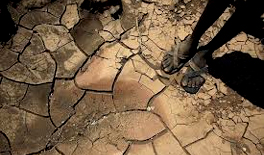Rainfall atlas of India 1971-2020
India is in the tropical monsoon zone and received plenty of rainfall. Most of the annual rainfall occurs during the summer monsoon season (June-September) every year. However, the distribution of rainfall
India is in the tropical monsoon zone and received plenty of rainfall. Most of the annual rainfall occurs during the summer monsoon season (June-September) every year. However, the distribution of rainfall
The emergence of the El Nino weather phenomenon is likely to coincide with the monsoon season (June-September) this year, India Metrological Department’s (IMD) Regional Climate Centre in Pune said in its
This report by Indian Meteorological Department (IMD) provides a detailed analysis of the various aspects of operational monitoring and forecasting of observed weather and climate features of 2013 SW monsoon. The report also discussed impact of the monsoon on the major Kharif crops during the season.
State level climate change trends over India during last 60 years have been presented this publication. The publication contains quantification of climate change trends with latest data (1951-2010) in

Climate during 2012 was warm in respect of temperature. Annual mean temperature anomaly for the country as a whole during the year 2012 was +0.49oC above the 1961-1990 period average making it the eighth
This year, the arrival of southwest monsoon current over the south Bay of Bengal and south Andaman Sea was delayed by 3 days due to non-conducive conditions for the development of convection over the region
Knowledge of mean rainfall and its variability of smaller spatial scale are important for the planners in various sectors including water and agriculture. In the present work long rainfall data series
A consensus outlook for the 2012 southwest monsoon rainfall over South Asia was developed, through an expert assessment of the available indications. The outlook was prepared based on the various prevailing
Climate during 2011 was relatively moderate in respect of both temperature and precipitation. Although the year ranked ninth warmest since 1901 there were less heat wave events during the peak summer
<p>The studies of UNEP (United Nations Environmental Programme) indicated that, over the preceding 20 years, the problem of land degradation had continued to worsen due to human activities and climate change such as prolonged or frequent droughts aggravating land degradation.
The occurrences of some exceptionally very heavy rainfall during the recent years and causing flash floods in many areas forced to study the long term changes in extreme rainfall over India.